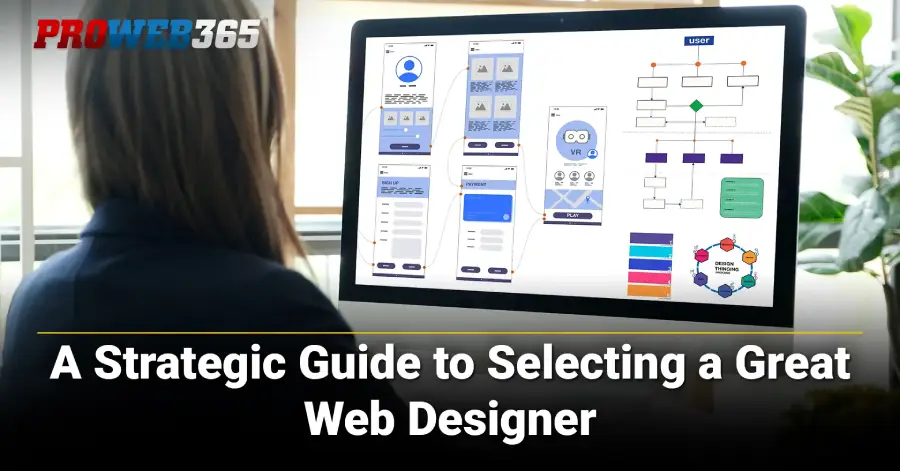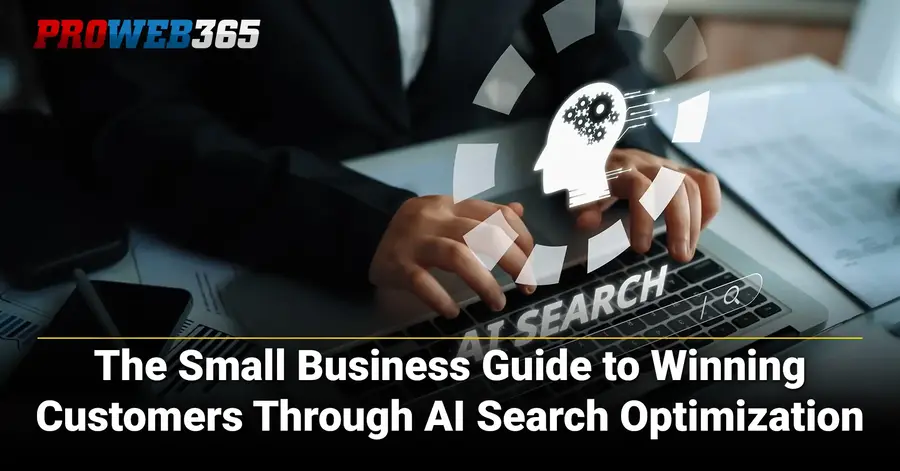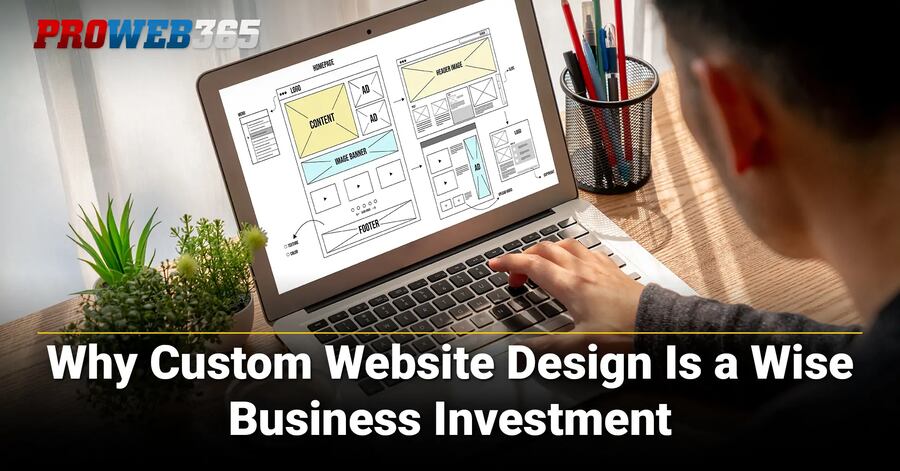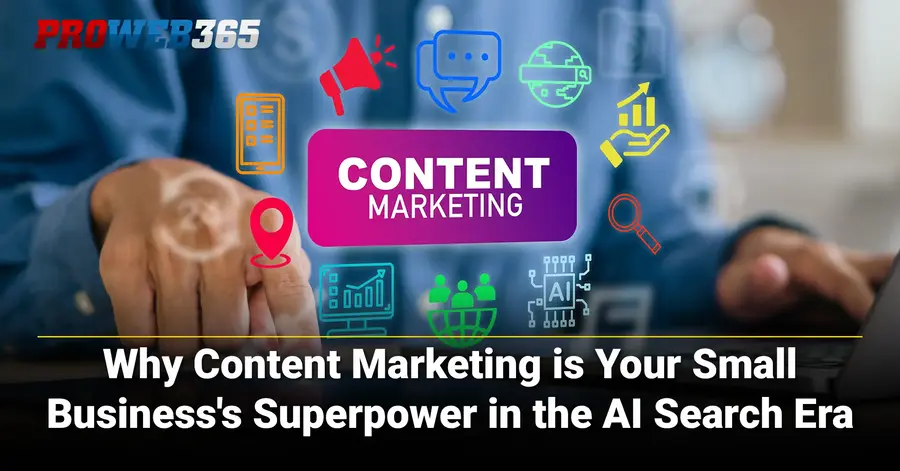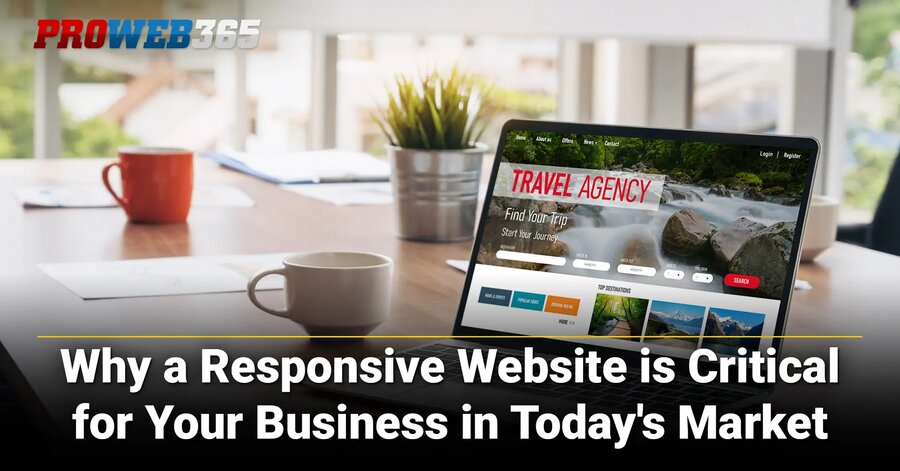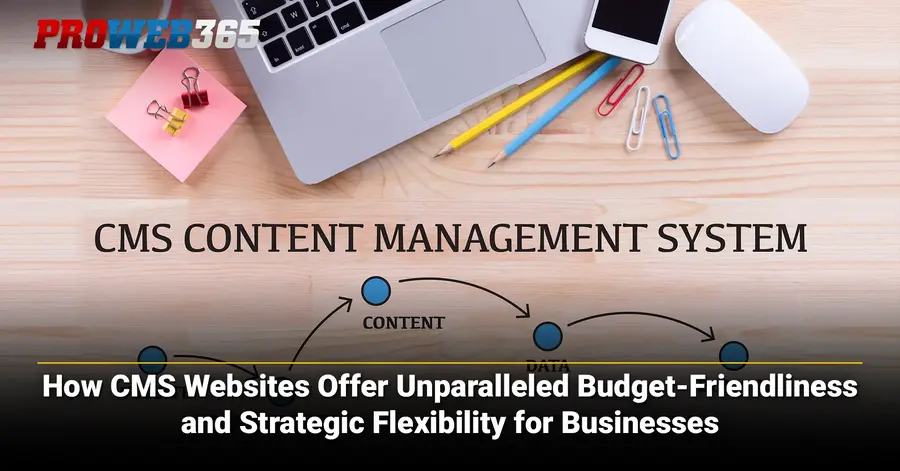How Much Does Web Design Cost in 2025? The Ultimate Guide for Businesses
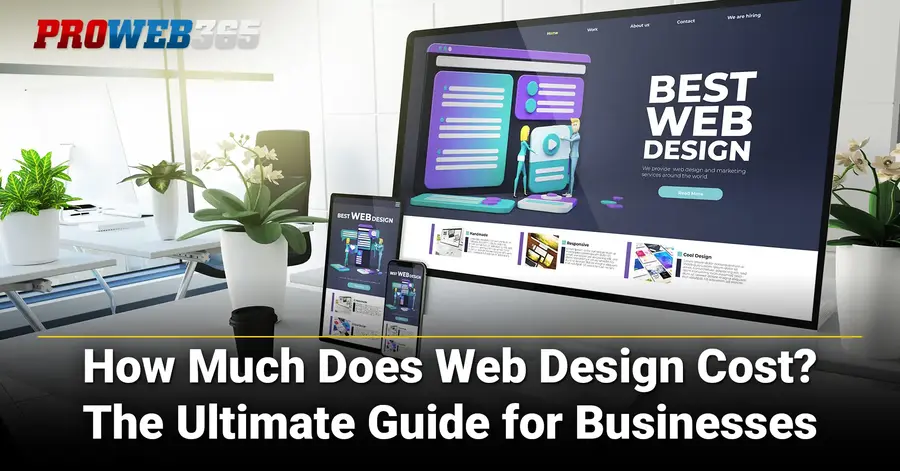
A website in 2025 is the equivalent of being in the Yellow Pages during the 2000s. Standard, expected, it serves as the cornerstone of one’s presence, providing information to consumers 24/7 even when their lights are off. For small to mid-size businesses (SMBs), understanding website costs has become critical for strategic planning, budgeting, and sustainable growth. While prices can range from a few hundred dollars to well over $100,000, depending on wants and needs, treating your site as an investment rather than an expense fundamentally changes the approach to this decision.
This comprehensive guide helps cut through the noise for SMBs looking into website design costs, breaking down both initial setup expenses and ongoing operational costs. In it, it will educate you on how factors like complexity, functionality, and business type directly influence pricing, while gaining the skills to distinguish between "cheap" solutions with smaller upfront costs that will require more in the long run and "affordable" investments that deliver lasting value.
Relying exclusively on social media platforms leaves your business at the mercy of algorithm changes and platform policies. A dedicated website serves as the digital headquarters — a space you control completely, which allows credibility to be built, capture leads, and convert visitors into customers. Without it, you're essentially paying a "digital credibility tax" through lost opportunities, diminished trust, and competitive disadvantage.
A Strategic Guide to Selecting a Great Website Designer
When you're a small to mid-size business owner or organizations, a website is more than just an online brochure; it's a foundational pillar for your identity, operations, and growth. In the AI era, a professional,...1. The Essential Building Blocks: Initial Website Costs

Creating a new website involves several foundational investments to establish a digital presence. These one-time expenses form the backbone of any online operations and directly impact the site's performance, security, and effectiveness.
A. Domain Name
A domain name (such as YourBusiness.com) serves as the unique digital address for customers to find and remember you online. It's more than just a URL; it's a crucial component of your brand identity that influences first impressions and memorability. Annual costs can be free for some, but the $15-$30 range is an ideal amount to budget, with the potential for that number to nearly double for the premium versions. Premium domains containing popular keywords or short, memorable combinations can command significantly higher prices, sometimes reaching thousands of dollars. Many hosting providers provide a financial break for beginner SMBs by including free domain registration for the first year.
B. Web Hosting
Web hosting provides the server space where your website files live for anyone in the world to see. The type of hosting you choose dramatically affects the site's speed, reliability, and ability to handle traffic.
Table 1: Web Hosting
| Hosting Type | Description | Annual Cost Range |
|---|---|---|
| Shared Hosting | Your website shares server resources with numerous other sites. Most economical option with easy setup, but performance suffers during traffic spikes as resources are divided among all sites. | $24 – $180 |
| Virtual Private Server (VPS) Hosting | Provides dedicated resources within a shared server environment, delivering improved performance, better security, and greater control over your hosting environment. | $960 – $6,000 |
| Cloud Hosting | Utilizes a network of interconnected servers to provide exceptional uptime and scalability. Resources adjust dynamically based on demand, making it ideal for growing businesses. | $120 – $20,000 |
| Dedicated Hosting | Your website gets an entire server to itself, providing maximum performance, complete control, and enhanced security. Best suited for high-traffic sites and complex applications. | $1,200 – $12,000+ |
| Managed WordPress Hosting | Specifically optimized for WordPress sites with automated updates, enhanced security, and specialized support. Perfect for non-technical users who want hassle-free management from this platform. | $36 – $96 |
Monthly hosting costs can be as low as $2 and go upwards of $500, depending on the chosen provider and plan specifications. Many modern website builders bundle hosting into their subscription packages, streamlining both billing and technical management.
The quality of your domain, hosting, and SSL certificate creates a ripple effect throughout the entire online presence. For instance, choosing budget hosting that frequently goes offline or loads slowly is not only frustrating for visitors, it also negatively impacts your Google rankings. Similarly, skipping SSL implementation triggers browser warnings that immediately raise red flags to visitors. These foundational elements aren't only technical requirements; they're strategic investments that determine whether your website becomes an asset or a liability. The hidden costs of poor infrastructure choices — lost traffic, damaged reputation, security breaches — often exceed any initial savings by orders of magnitude.
C. SSL Certificate
A Secure Sockets Layer (SSL) certificate encrypts the connection between the website and visitors' browsers, protecting sensitive information during transmission. This security measure has evolved from optional to mandatory, particularly for sites handling any and all user data. Beyond security, SSL significantly impacts SEO/GEO performance, as Google prioritizes secure sites in search results. Visitors immediately recognize secure sites by the Hypertext Transfer Protocol Secure (HTTPS) prefix at the beginning of a URL and padlock icon in their browser.
Annual SSL costs can go upwards of $1,500, with many hosting providers now offering basic SSL certificates at no additional charge. For businesses requiring maximum trust validation, Extended Validation (EV) SSL certificates provide the highest level of authentication, being around$200-$300+ annually and displaying additional trust indicators in browsers.
The Small Business Guide to Winning Customers Through AI Search Optimization
The internet is constantly evolving, and AI in search engines is being used to find business for customers. For small to mid-size business owners, understanding and adapting to these technological advances is crucial for growth....D. Website Design & Development
This core investment determines your website's visual impact, functionality, and user experience.
- Themes & Templates vs. Custom Design:
- Templates: Pre-built designs offer rapid deployment at minimal cost, usually between$0-$200 for a one-time purchase. They're perfect for businesses needing to launch quickly on a budget, though customization options are limited.
- Semi-Custom Design: This hybrid approach starts with a template foundation but adds custom elements for uniqueness. Since it’s personalized by a professional, this is where the price tag begins to skyrocket, with typical investments being anywhere from $3,000 to $8,000.
- Fully Custom Design: Building from scratch ensures your website perfectly reflects your brand's unique personality and requirements. Custom development has the highest overall price point out of the list, with a minimum investment of $2,000 to a maximum of $15,000+, depending on complexity and the designer's expertise level.
- UI/UX Design (User Interface/User Experience):
- UI/UX design orchestrates how visitors interact with your site (User Interface) and shapes their overall journey (User Experience). This investment directly correlates with engagement metrics, conversion rates, and customer satisfaction. Professional UI/UX creates a smooth user journey, enabling visitors to complete desired actions effortlessly.
- UI/UX design investment typically ranges from $750-$4,000, varying with project scope and complexity. Specialized UI/UX professionals, who bring deep expertise in user psychology and interaction design, command hourly rates between $75-$150.
- Frontend & Backend Development:
- Frontend Development: Creates everything visitors see and interact with, from layouts and animations to responsive design and interactive elements. Investments range from $1,000 to $12,500, with complexity driven by custom animations, cross-device compatibility, and interactive features.
- Backend Development: Powers the behind-the-scenes, including functionality — database management, server logic, API integrations, and data processing. Backend development market prices are $4,000-$12,500, with those numbers escalating for complex data operations, custom workflows, and extensive third-party integrations.
- Combined web design and development investments range from $1,000 to $100,000+, reflecting the vast spectrum of possible complexity.
Professional UI/UX design represents far more than aesthetic enhancement — it's a strategic investment in user behavior optimization. Consider that poor design directly translates to measurable business losses: confusing navigation increases bounce rates by up to 50%, while difficult checkout processes result in 70% of potential sales being abandoned.
On the other hand, intuitive design acts as a silent salesperson, guiding visitors toward conversion without friction. This positions UI/UX investment not as a discretionary expense but as a vital component of growing your revenue. Every dollar spent on user experience typically returns $2-$100 in value, making it one of the highest ROI investments in web development.
E. Content Creation
Compelling content transforms visitors into customers by informing, engaging, and persuading them to take action.
- Copywriting: Professional writers craft persuasive text that resonates with your audience's needs and desires. Quality copywriting from experienced professionals average from $650 to $1,000 per page. For a standard 5-page website, set funds aside anywhere from $500 for basic content to $5,000 for sophisticated, conversion-optimized copy that drives results.
- Photography/Video: Visual content creates immediate emotional connections and conveys complex information instantly. Professional photography and video production enhance credibility, while generic stock images hurt brand reputation because they appear less authentic and can set off alarms for visitors. On average, professional video production starts at $500, with scaling costs based on complexity and length.
- Total content creation investments range from $0 (completely DIY) to $5,000+, depending on volume, quality requirements, talent, and whether you use in-house resources or professional services.
The hidden cost of inadequate content often overshadows the initial perceived savings of DIY approaches. Think of a beautifully designed website with poorly written, unengaging content as like a luxury storefront with empty shelves — it fails to convert visitors and damages brand perception. Quality content serves multiple critical functions simultaneously: it engages visitors, improves SEO/GEO rankings, establishes authority, and drives conversions. This makes content creation an absolute must for website investment. Businesses that view content as an afterthought typically spend far more on paid advertising to compensate for poor organic performance.
F. Add-ons & Plugins
Strategic add-ons and plugins extend your website's capabilities, enhancing functionality and user experience. These tools range from everyday essentials such as contact forms and security plugins to advanced capabilities like AI chatbots, marketing automation, and analytical reporting. For pricing, one-time purchases can reach $200 while maintenance can be closer to $500/month. While free plugins provide basic functionality, premium versions deliver advanced features, priority support, and regular updates that justify their cost.
Table 2: Common Website Add-ons & Plugins and Their Costs
| Add-on/Plugin Type | Cost Range | Notes |
|---|---|---|
| General Add-ons & Plugins | $0 – $500 per month | Mix of one-time and recurring fees. Free versions are available, and premium unlocks advanced capabilities. |
| Premium Plugins | $100 – $300 (one-time) | Superior features, dedicated support, regular updates, and extended functionality. |
| E-commerce Tools | $10 – $2,000+ per month | Scales from basic cart functionality to enterprise features like multichannel selling and automated marketing. |
G. eCommerce Tools & Capabilities
Transforming your website into a revenue-generating online store requires specialized e-commerce functionality. Examples of essential components include product catalogs, shopping cart systems, secure payment processing, and inventory management, to name a few. Modern e-commerce platforms also integrate advanced features such as abandoned cart recovery, customer segmentation, and personalized recommendations.
Basic e-commerce functionality starts around $25 monthly for simple solutions. However, businesses requiring sophisticated features — multichannel selling across Amazon, Instagram, and eBay; automated email marketing sequences; appointment booking systems — should budget $200+/month. Initial e-commerce integration typically adds $5,000 to $30,000 to development costs, while the platforms WooCommerce (WordPress) and Shopify offer scalable solutions that grow with your business needs, making them a popular option for SMBs.
Why Custom Website Design is a Wise Business Investment
A strong online presence is essential for small and mid-size businesses (SMBs) today. A website acts as your virtual storefront, 24/7 sales representative, and above all, the first impression for potential customers. With rapid expansion...2. Beyond Launch: Understanding Ongoing Website Expenses
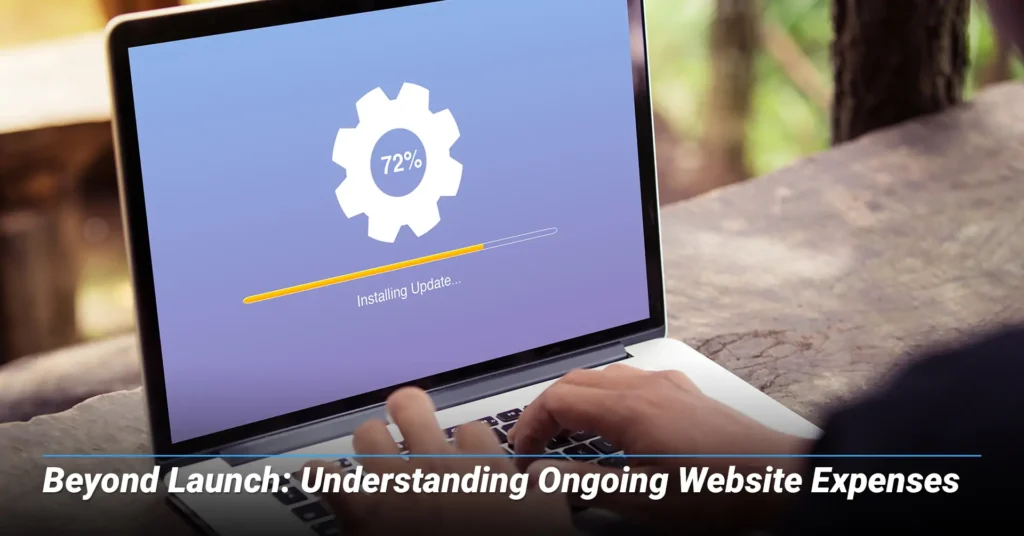
Once the website is launched, the hard work begins. Ongoing expenses ensure your site remains secure, functional, and competitive in an ever-evolving digital landscape. These recurring costs protect your initial investment while allowing for continuous improvement and growth.
A. Website Maintenance & Support
Professional maintenance keeps the site running smoothly, securely, and efficiently. This encompasses regular software updates, security patch installations, bug fixes, performance optimization, and routine backups. Without proper maintenance, websites lose their steam and become slower, less secure, and increasingly prone to catastrophic failures.
The cost for maintenance varies based on a multitude of factors. Agency-provided maintenance ranges from $3,600 to $50,000/year, including comprehensive support and proactive monitoring. Website builder platforms offer more economical maintenance, with $5400/year on the higher end, as basic updates are often automated. Monthly maintenance expenses span from $5 for simple sites to $5,000+ for complex platforms. Generally, small to medium-sized business websites will invest $35 to $500 monthly in maintenance. Dedicated technical support can add up to $3,500 to the monthly budget, depending on response time requirements and support depth.
Table 3: Estimated Annual Website Maintenance Costs by Business/Website Type
| Website Type | Annual Maintenance Cost (Range) | Monthly Maintenance Cost (Range) |
|---|---|---|
| Personal Websites | $60 – $300 | $5 – $25 |
| Professional Blogs | $300 – $900 | $25 – $75 |
| Small to Medium Business Websites | $420 – $6,000 | $35 – $500 |
| Complex Multimedia Sites | $3,600 – $30,000 | $300 – $2,500 |
| Corporate Websites | $2,400 – $54,000 | $200 – $4,500 |
| eCommerce Websites | $15,000 – $30,000 | $750 – $5,000 |
| Enterprise Websites | $30,000 – $50,000 | $5,150 – $10,000 |
Website maintenance is similar to automotive maintenance — regular oil changes prevent engine failure, just as regular updates prevent security breaches. Neglecting maintenance creates a snowball effect: minor issues cascade into major problems, security vulnerabilities multiply, and performance gradually deteriorates until the site becomes unusable. The false economy of skipping maintenance inevitably results in emergency repairs costing 10-100x more than prevention would have. Moreover, a hacked or malfunctioning website needs reputation repair, rebuilding customer trust, and potentially legal remediation. This positions maintenance not as an optional expense but as essential insurance protecting your digital assets and brand reputation.
B. Marketing Tools & Services
Attracting visitors and converting them into customers requires ongoing marketing investment beyond website creation.
- SEO (Search Engine Optimization)/GEO (Generative Engine Optimization): SEO/GEO remains the highest-ROI digital marketing investment, driving sustainable organic traffic without per-click costs. Being effective requires continuous keyword research, content optimization, technical improvements, and link building. Modern SEO/GEO also utilizes voice search optimization, featured snippet targeting, and mobile-first indexing compliance.
- PPC (Pay-Per-Click) & Social Media Integration: Paid advertising enhances reach while social media integration builds community engagement. These channels complement SEO/GEO by providing immediate visibility while the organic rankings continue to improve.
Marketing tool investments range from $0 for DIY efforts to $10,000+ monthly for comprehensive campaigns. The most common mistake SMBs make is treating SEO/GEO as an afterthought. Doing so makes these professionally designed masterpieces invisible to consumers who would appreciate them. SEO/GEO success should be included during website architecture planning. These fundamental elements, including site structure, URL hierarchy, and mobile responsiveness, directly impact ranking potential. For instance, Google's mobile-first indexing means sites not designed for being viewed on a phone or tablet face significant ranking penalties, making them appear later in a search, regardless of content quality.
The partnership between design and SEO/GEO means choosing a web partner with proven expertise dramatically reduces long-term marketing costs. Sites built with integration from the get-go achieve first-page rankings 3-6 months faster than sites that have to go back and add it. Including this when the website is first set up translates to thousands in saved advertising costs and accelerated revenue generation.
C. Software Licenses & Subscriptions
Modern websites rely on various software subscriptions for advanced functionality. These include premium CMS features, specialized plugins, email marketing platforms, analytics tools, CRM systems, and automation software. Recurring costs are typically billed monthly or annually, enabling sophisticated functionality and competitive advantages.
Why Content Marketing is Your Small Business's Superpower in the AI Search Era
Artificial intelligence (AI) is completely changing how search engines work, shifting the focus from simple keywords to understanding what people really want to find. For small businesses, this new digital landscape is a massive opportunity....3. How Complexity and Type Influence Website Costs
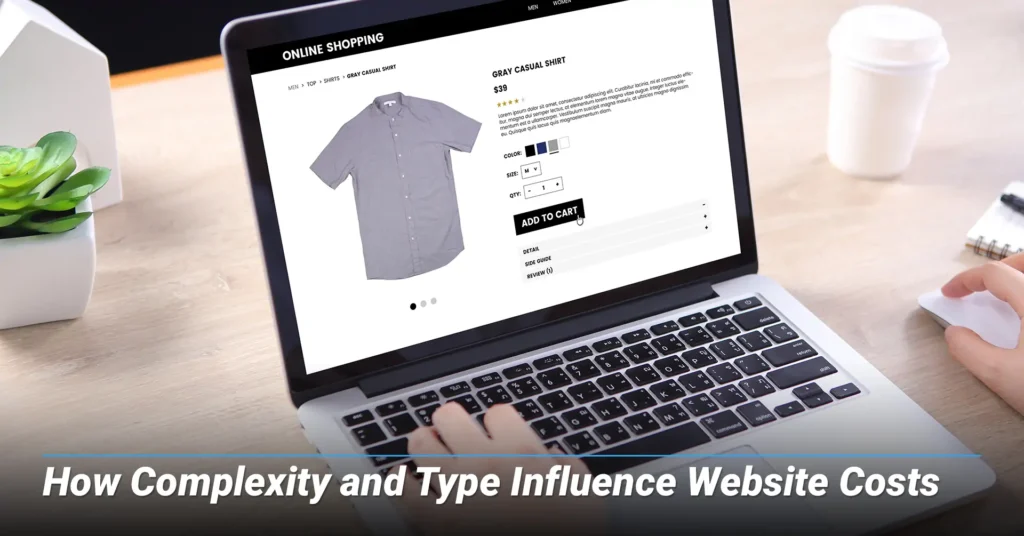
Website costs vary dramatically based on two primary factors: technical complexity and business type. Understanding these differences helps make it easier to budget expenses.
A. Cost by Website Complexity
Complexity is what determines development time and expertise requirements, creating distinct pricing tiers.
- Basic Website:
- Description: Simple info sites serving as digital brochures or portfolios. Features static content (basic images), basic contact forms, and minimal interactivity. Ideal for establishing an online presence without complex functionality.
- Development Time: 2 to 3 months for professional builds.
- Development Cost: Professional development ranges $15,000 to $25,000. DIY approaches using builders cost $100 to $500. Template-based professional sites can cost up to $1,000.
- Medium Website:
- Description: Full-featured business websites with dynamic content (social media integration), user interaction capabilities, and blog functionality. These sites balance sophistication with cost-effectiveness, serving most SMB needs effectively.
- Development Time: 4-6 months for complete implementation.
- Development Cost: $40,000-$100,000 for professional development.
- Complex Website:
- Description: Enterprise-grade platforms featuring extensive customization, sophisticated databases, multiple user roles, complex workflows, and numerous integrations. Examples include LinkedIn, Airbnb, and other similar platforms.
- Development Time: 9- 12 months minimum.
- Development Cost: $80,000-$200,000 for standard complex sites. Exceptional projects can exceed $200,000 significantly.
Complexity multipliers include page count, unique templates required, user role sophistication, data management requirements, and third-party integration depth. Each additional layer of complexity adds development time and requires specialized expertise, supporting the higher initial and continual investment costs.
Why the Majority of Small Businesses Need an E-Commerce Website
With global e-commerce sales reaching $6.86 trillion in 2025, an 8.37% increase from 2024, and mobile commerce accounting for 59% of total retail sales at $4.01 trillion, small businesses can no longer afford to ignore...B. Cost by Business/Website Type
Different business models require specific website features and functionality, creating distinct cost profiles.
- Portfolio Website: Showcases creative work with an emphasis on visuals.
- Initial Cost: $300-$5,000.
- Development Time: Approximately 100 hours.
- Small Business Website: Establishes local business presence with service information and contact details.
- Initial Cost: $500-$10,000 overall. Professional small business sites typically range from $6,500-$15,000. Basic DIY builds are possible for $100-$500.
- Annual Maintenance: $3,600-$12,000.
- Blog/News Website: Publishes regular content with reader engagement features.
- Initial Cost: $100-$3,000.
- Development Time: Approximately 120 hours.
- eCommerce Website: Full online store with secure transactions and inventory management.
- Initial Cost: $30,000 to$80,000 typically. Custom designs start at $5,000, scaling with features.
- Annual Maintenance: $750-$5,000 monthly, or $15,000-$30,000 annually.
- Key components: Payment gateway integration, SSL security, mobile optimization, inventory management, and marketing automation capabilities.
- Corporate Website: Professional presence for established companies with investor relations and career sections.
- Initial Cost: $15,000-$20,000 standard. Can start at $10,000 for basic versions or exceed $150,000 for complex implementations.
- Annual Maintenance: $2,000-$15,000, or $200-$4,500 monthly.
- SaaS Website (Software as a Service): Delivers software applications via a subscription model.
- Initial Cost: $40,000-$100,000, with some projects reaching $75,000+.
- Annual Maintenance: Up to $60,000 for complex platforms.
- Key components: Multi-tenancy architecture, subscription management, robust security, elastic cloud infrastructure, and automated billing systems.
- Enterprise Website: Large-scale platforms serving major corporations with extensive functionality.
- Initial Cost: $10,000-$100,000+. Advanced enterprise sites typically range from $50,000 to $100,000.
- Annual Maintenance: $30,000-$50,000.
- Web Portal: Centralized platform aggregating various services and information streams.
- Initial Cost: Approximately $70,000.
- Social Media Website: Community platforms enabling user interaction and content sharing.
- Initial Cost: Approximately $120,000 for basic functionality.
The following table provides quick, comprehensive reference pricing for different website types and complexity levels. These can be used as a base for what to expect budget-wise during the initial planning.
Table 4: Estimated Website Costs by Type and Complexity (Initial & Annual)
| Website Type/Complexity | Initial Development Cost (Range) | Annual Maintenance Cost (Range) | Key Characteristics |
|---|---|---|---|
| Basic Website | $15,000 – $25,000 (DIY: $100 – $1,000) | $3,600 – $12,000 | Simple informational sites, online brochures, portfolios with static pages. |
| Medium Website | $40,000 – $100,000 | $12,000 – $30,000 | Standard business sites with dynamic content, user interaction, minor integrations. |
| Complex Website | $80,000 – $200,000+ | $30,000 – $50,000+ | Highly customized, enterprise-level, large e-commerce, SaaS platforms, extensive features. |
| Portfolio Website | $300 – $5,000 | $420 – $6,000 | Showcases work, minimal functionality. |
| Small Business Website | $500 – $10,000 (Basic: $6,500 – $15,000) | $3,600 – $12,000 | Informational sites for local businesses, basic contact/service info. |
| Blog/News Website | $100 – $3,000 | $300 – $900 | Regular content publication, comment sections. |
| eCommerce Website | $30,000 – $80,000+ | $15,000 – $30,000 ($750 – $5,000/month) | Online stores with secure transactions, product listings, shopping carts. |
| Corporate Website | $15,000 – $20,000+ | $2,000 – $15,000 ($200 – $4,500/month) | Professional company sites, detailed info, investor relations. |
| SaaS Website | $40,000 – $100,000+ | Up to $60,000 | Delivers software applications via subscription, multi-tenancy. |
| Enterprise Website | $50,000 – $100,000+ | $30,000 – $50,000 | Large-scale, high-traffic sites with extensive functionality and integrations. |
| Web Portal | ~$70,000 | Varies (often high) | All-in-one access to diverse information/applications. |
| Social Media Website | ~$120,000 | Varies (often high) | User interaction, content sharing, community building. |
A Guide to Finding a Good Online Marketing Agency
To build a commanding online presence, especially as a mid-size business or organization, a variety of factors need to come together and be executed effectively. Understanding your audience and connecting with them requires a high-performing...4. The "Who" Behind the Price: Service Provider Options
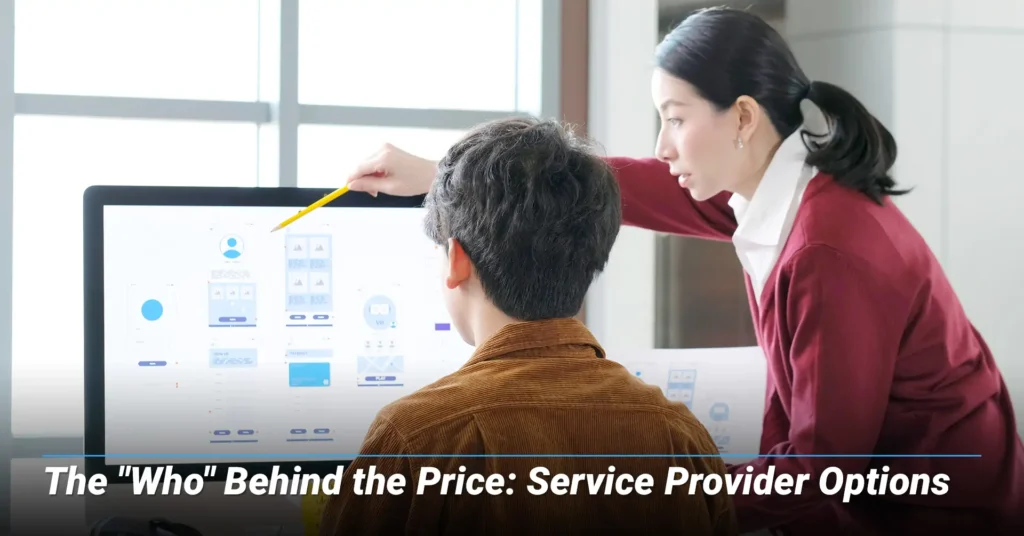
Your choice of web design partner profoundly impacts not only cost but also the overall quality and the website’s long-term success. Understanding each option's strengths and limitations enables informed decision-making.
A. Freelance Web Designers
Independent professionals offering personalized service and flexible engagement models.
- Pros: Cost-effective for smaller projects with direct designer communication. Freelancers often provide more flexibility in approach and timeline, and can easily adapt to changes needed. A lower overhead allows for competitive pricing without sacrificing quality.
- Cons: The quality of work differs from freelancer to freelancer. Time is needed to vet each candidate. Limited bandwidth means there will be longer timelines for complex projects. Since there is (usually) only one person hired for the job, success relies almost entirely on their shoulders. If failure occurs, they will also need to fix it.
- Pricing Models:
- Hourly Rates: $25-$100 per hour provides transparency but can lead to budget uncertainty. Best for undefined scopes or ongoing adjustments where flexibility matters more than fixed costs.
- Project-Based Pricing: Fixed fees ranging from $500-$5,000 for complete websites, with complex sites reaching $10,000. Provides budget certainty and incentivizes efficient delivery.
- Impact of Location on Rates: Geographic diversity allows for more qualified candidates to be reviewed while also creating significant cost variations. US-based designers will charge $100-$150 hourly, while equally skilled professionals from Eastern Europe or Asia have nearly double lower rates at $40-$80 hourly. This allows for additional options as long as both parties are respectful of each other’s time zones.
Table 5: Freelance Web Design Pricing Models: Pros & Cons for Clients
| Pricing Model | Pros for Client | Cons for Client | Typical Rates |
|---|---|---|---|
| Hourly Rates | Pay only for actual time worked; ideal for evolving requirements or small tasks. | Final cost can be unpredictable; can escalate if scope creeps or extensive revisions needed. | $25 – $100 per hour |
| Project-Based Pricing | Fixed, predictable budget; clear deliverables and timeline expectations. | Additional features cost extra; changes require contract amendments. | $500 – $5,000+ for complete website |
| Hybrid Approach | Combines predictability with flexibility; core features fixed, additions hourly. | Requires precise scope definition to distinguish core from additional work. | Mixed: fixed base + hourly additions |
B. Web Design Agencies
Full-service teams providing comprehensive solutions and professional project management.
- Pros: Agencies deliver consistent quality through established processes and team expertise. Comprehensive services achieve their strategies through ongoing support with established processes that allow for timely delivery. Multiple specialists collaborate for superior results with a reduced risk through team redundancy and established business practices.
- Cons: Higher costs reflect overhead and team involvement. Less flexibility than freelancers opens the door for a less personalized job done for smaller clients.
- Pricing Models:
- Project-Based Pricing: Fixed fees from $15,000-$150,000 provide budget certainty. Requires detailed scope definition to prevent costly change orders. Best for well-defined projects with clear requirements.
- Retainer Pricing: Monthly fees provide ongoing services and priority support. Ideal for businesses needing continuous updates, maintenance, or marketing services. Creates predictable expenses and ensures dedicated resource allocation.
- Impact of Location on Rates: US agencies charge $100-$250 hourly. For a 1,000-hour project, domestic agencies can cost upwards of $120,000 while offshore alternatives deliver comparable quality for $40,000, though communication and time zone challenges may offset savings.
Table 6: Web Design Agency Pricing Models: Pros & Cons for Clients
| Pricing Model | Pros for Client | Cons for Client | Typical Rates |
|---|---|---|---|
| Project-Based Pricing | Fixed budget enables accurate planning; clear milestones and deliverables; reduced financial risk. | Scope changes trigger additional costs; requires detailed upfront planning; less flexibility during development. | $15,000 – $150,000 for complete projects |
| Retainer Pricing | Priority access to team; predictable monthly costs; economies of scale; established working relationship. | May pay for unused hours; less suitable for project work; long-term commitment required. | $1,000 – $10,000+ per month |
Why a Responsive Website is Critical for Your Business in Today's Market
The internet has evolved from a one-room desktop at home or work to a portable, on-the-go browser able to connect anyone, anywhere, any time. Now, websites function as primary digital storefronts, often the first customer...5. Cheap vs. Affordable: Understanding True Value
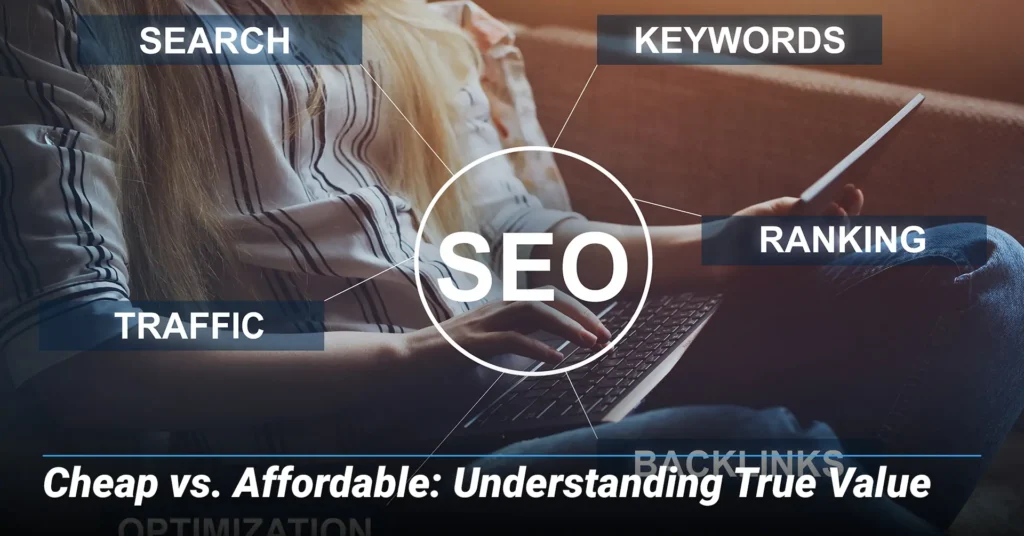
The distinction between "cheap" and "affordable" web design represents the difference between saving a few dollars now and paying for it later. Having a critical understanding determines whether your website becomes a growth engine or a constant drain on resources.
A. The Pitfalls of "Cheap" Web Design
"Cheap" lures business owners in with minimal upfront cost, usually through basic DIY builders or inexperienced providers. This approach creates problems that ultimately cost far more than initial savings.
- Untrustworthy and Unprofessional Appearance: Cheap websites immediately signal low quality by their generic templates, poor layouts, and amateur design. Modern consumers make trust decisions in milliseconds—a cheap-looking website doesn't pass the sniff test, driving potential customers to competitors before they even read a word of your content.
- Limited Functionality and Scalability: Budget solutions lock you into rigid templates with minimal customization options. As your business grows, these limitations become strangleholds, forcing expensive migrations or complete rebuilds just when resources are needed elsewhere.
- Poor User Experience (UX) and Design: Cheap sites frustrate visitors with slow loading, broken features, and confusing navigation. With attention spans measured in seconds, poor UX directly translates to lost revenue, with everyone leaving your site for a competitor.
- Significant SEO/GEO Challenges: Without a proper SEO/GEO foundation, your website becomes invisible online. Solutions that cut corners and lack technical SEO/GEO, mobile optimization, and content strategy ensure the site never ranks, forcing expensive paid advertising to generate any traffic at all.
- Security Risks and Vulnerabilities: Minimal security measures make it a feeding frenzy for hackers to steal valuable and sensitive data. Beyond the immediate costs of recovery and potential lawsuits, security breaches permanently destroy customer trust. Rebuilding reputation costs exponentially more than prevention.
- Hidden Costs and Opportunity Costs: The true cost of cheap includes countless hours learning platforms, fixing problems, and managing updates, time better spent growing your business. Lost sales from poor performance, damaged reputation from security breaches, and competitive disadvantages from these factors not being up to par overrule any initial savings.
- Lack of Ongoing Support and Maintenance: When problems arise—and they will — you're alone. No support means every issue becomes a fire to put out, either consuming your time or requiring expensive emergency assistance.
- Missed Branding Opportunities: Generic templates make any website invisible in a crowded market. Without a distinctive design reflecting your unique value, it makes the site forgettable instead of memorable.
B. The Benefits of "Affordable" Web Design
"Affordable" represents strategic value optimization — professional quality achieved through smart choices rather than corner-cutting. This approach views websites as growth opportunities instead of expenses.
- Strategic Investment for Long-Term Growth: Affordable design utilizes spending in a well-thought-out manner, ensuring every dollar contributes to business objectives. The website becomes a revenue generator, not a cost center, delivering measurable ROI through increased leads and sales.
- High-Quality Design and User Experience: Professional design creates a user experience effortlessly guiding visitors toward conversion. Intuitive navigation, fast loading, and mobile optimization create positive experiences that build trust and encourage engagement, turning them into customers.
- Built-in SEO/GEO Optimization for Better Visibility: Starting with SEO/GEO integration ensures organic traffic growth from day one. Proper technical foundation, content strategy, and ongoing optimization reduce dependence on paid advertising while building sustainable visibility.
- Scalability to Adapt to Business Needs: Flexible platforms like WordPress accommodate growth without requiring rebuilds. Add functionality as needed, expand content seamlessly, and evolve your digital presence at the same rate the business grows.
- Strong Brand Identity and Credibility: Custom design elements and consistent branding create memorable experiences, differentiating you from competitors. Professional appearance builds trust instantly, converting more visitors into clients.
- Ongoing Support and Maintenance Options: Professional partners provide continuous support, ensuring your site remains secure, updated, and optimized. Problems are resolved quickly before they escalate into something worse.
Table 7: Cheap vs. Affordable Web Design: A Strategic Comparison
| Feature/Aspect | Cheap Web Design | Affordable Web Design |
|---|---|---|
| Initial Cost | Minimal upfront, maximum long-term | Strategic investment, controlled budget |
| Quality & Appearance | Generic, unprofessional, damages credibility | Professional, unique, builds trust |
| Functionality & Scalability | Rigid limitations, requires rebuilding | Flexible, grows with business |
| User Experience (UX) | Frustrating, high abandonment | Intuitive, drives conversions |
| SEO Performance | Invisible online, requires paid ads | Organic growth, sustainable visibility |
| Security | Vulnerable, invites breaches | Protected, maintains trust |
| Hidden Costs | Endless time sink, lost opportunities | Predictable, generates ROI |
| Ongoing Support | You're alone when problems arise | Professional assistance available |
| Brand Identity | Generic, forgettable | Distinctive, memorable |
| Long-Term Value | Becomes liability requiring replacement | Appreciating asset driving growth |
Why Your Brand is THE Most Powerful Asset in the AI Era
As AI begins to reshape browsing, so too is the digital landscape for small to mid-size businesses (SMBs). To go along with the tide, investing in brand strength is crucial for customer acquisition and sustainable...6. Smart Budgeting and Choosing Your Web Design Partner
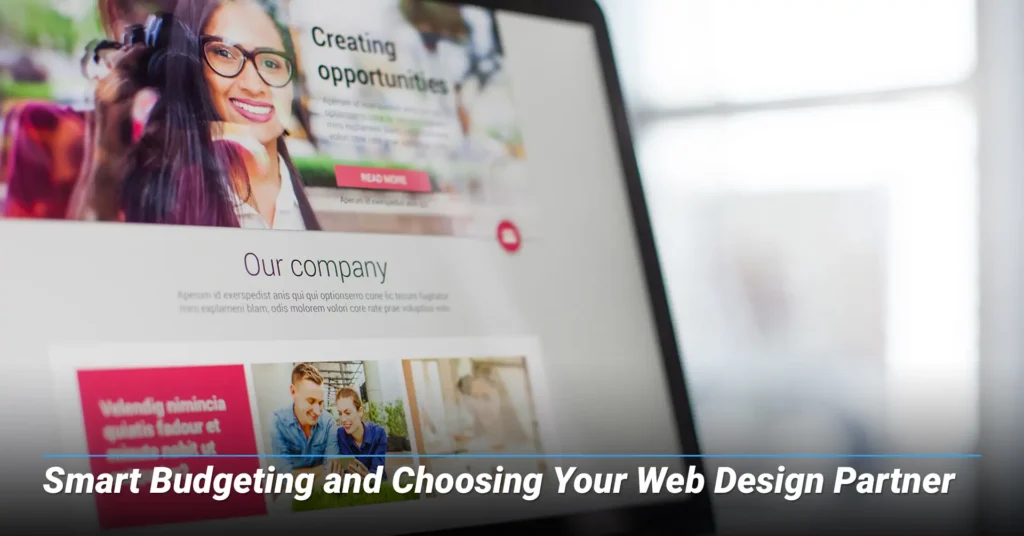
Strategic planning and partner selection determine whether your website investment delivers exceptional returns or expensive disappointment. These decisions shape your digital future.
A. Essential Budgeting Tips
Successful website projects begin with creating set financial plans factoring in key variables to stay on budget.
- Define Your Website Goals and "Must-Haves" Clearly: Start by outlining specific, measurable objectives (example, generate 50 leads monthly, process 100 orders, or educate 1,000 visitors). List wants vs. needs regarding features to provide clarity and scope to these goals.
- Research and Compare Quotes Thoroughly: Obtain at least three detailed proposals. Compare not only price but also services, timelines, and post-launch support. Understand what's included versus additional costs. The lowest quote is not always the best choice.
- Factor in Both One-Time and Ongoing Expenses: Complete budgets include initial development plus recurring costs — hosting, maintenance, marketing, and licenses. Ignoring ongoing expenses creates financial stress and forces corner-cutting on essential services.
- Prioritize Mobile-First Design and SEO/GEO from the Outset: With 70% of traffic being mobile, responsive design is a must. Building SEO/GEO into architecture costs far less than retrofitting. These aren't features to add later — they're foundational requirements.
- Set a Budget Range, Not a Fixed Amount: Web projects involve discoveries and opportunities. A range (ex, $15,000-$20,000) provides flexibility for valuable additions while maintaining financial discipline. Rigid budgets can lead to compromises on critical features.
- Include a Contingency Buffer: Add 15%-20% for unexpected needs — additional features, expanded scope, or market opportunities. This buffer prevents delays and ensures quality isn't sacrificed when surprises arise.
B. How to Choose the Right Web Design Partner
Your web design partner becomes a strategic ally in digital success. Choose carefully.
- Look for SEO/GEO Expertise and a Proven Track Record: Partners should demonstrate deep SEO/GEO knowledge and show past examples of strong site ranking performance from previous projects. Request case studies showing traffic growth and ranking improvements. SEO/GEO expertise from day one saves thousands in future marketing costs.
- Check Their Portfolio, Client Testimonials, and Case Studies: Review work similar to your needs. Look for design quality, functionality, and business results. Contact references directly — ask about communication, timeline adherence, and post-launch support. Real client experiences reveal true capabilities.
- Ensure They Are Good Listeners and Understand Your Industry: Effective partners ask discovery questions about your business, customers, and goals. They should demonstrate industry knowledge or showcase a willingness to learn. Beware those pushing one-size-fits-all solutions without understanding your unique needs.
- Inquire About Their Process, Security Practices, and Maintenance Plans: Professional partners have defined workflows, milestone schedules, and clear communication protocols. Verify their security measures — SSL implementation, regular backups, and update procedures. Understand maintenance options and response times for issues.
- Ask for a Detailed Breakdown of Costs and How Extra Charges Are Handled: Transparency builds trust. Itemized quotes should specify what's included and what costs extra. Understand their change order process—how additional requests are priced and approved. Hidden fees destroy budgets and relationships.
- Consider Their Communication Style and Responsiveness: Initial interactions predict future relationships. Do they respond promptly? Explain clearly? Listen actively? Poor communication during sales becomes worse during projects. Choose partners who see your vision and not only as another project.
How CMS Websites Offer Budget-Friendliness and Strategic Flexibility for Businesses
Content Management Systems (CMS) empower small to mid-size businesses (SMBs) to build and grow their online presence affordably and efficiently. To better understand, a report on how CMS platforms offer cost-effectiveness and remarkable adaptability, enabling...7. Common Pitfalls for Small to Mid-Size Businesses to Avoid

While the potential for a powerful online presence is immense, small to mid-size businesses often encounter common pitfalls during website development that can lead to wasted resources and suboptimal results. Avoiding these mistakes is as crucial as understanding the costs themselves.
- Not Hiring a Professional: Many small business owners believe they can save money by attempting to build a website entirely on their own using free templates or basic builders. However, underestimating the complexity of professional web design often leads to an unprofessional-looking site that fails to achieve business goals and can cost more in the long run due to necessary fixes or complete redevelopment.
- Neglecting Mobile-First Design: With the vast majority of internet users accessing websites from mobile devices in 2025, failing to prioritize a mobile-first, responsive design is a critical error. Websites not optimized for this layout offer a poor user experience, leading to high abandonment rates and significantly lower search engine rankings.
- Weak SEO/GEO Strategy: A website, no matter how visually appealing, is ineffective if it cannot be found by potential customers. Many businesses neglect to implement an actionable and executable SEO/GEO strategy from the outset, resulting in low visibility in search results and missed opportunities for organic traffic.
- Lack of Clear Calls-to-Action (CTAs) and Hidden Contact Information: Websites must guide visitors toward desired actions, whether it's making a purchase, filling out a form, or calling the business. Failing to place clear and prominent CTAs or making contact information difficult to find significantly reduces conversion opportunities.
- Using Generic or Irrelevant Content/Images: Low-quality stock images or poorly written, unengaging content can deter visitors and undermine a brand's credibility. Content should be relevant, high-quality, and reflect the brand's unique voice to effectively engage the target audience.
- Ignoring Website Maintenance and Security Updates: A website is a dynamic asset that requires continuous care. Neglecting regular updates, security patches, and backups leaves the site vulnerable to technical issues, performance degradation, and cyberattacks, which can lead to costly downtime, data breaches, and reputational damage.
- Failing to Define Project Scope Clearly: Ambiguous project requirements can lead to "scope creep," where additional features or changes are requested after development has begun. This results in budget overruns, extended timelines, and frustration for both the business owner and the development team, as they implement.
- Slow Page Load Speed: In an age of instant gratification, slow-loading websites quickly lose visitors. Poorly optimized images, excessive code, or inadequate hosting can contribute to slow speeds, negatively impacting user experience, bounce rates, and search engine rankings.
Conclusion: Investing in Your Digital Future
Nowadays, a functional, secure website is vital for SMBs, acting as a dynamic digital storefront for growth. Costs vary significantly based on complexity and chosen partner. Crucially, "cheap" solutions often incur hidden long-term expenses, while "affordable" investments deliver quality, scalability, and strong return on investment (ROI). Informed decisions determine success: clearly defining goals, understanding all cost components, selecting the right web design partner, and avoiding common pitfalls. A strategic, well-planned site lays a solid foundation for sustained growth and a competitive edge in the digital marketplace.
Best Tips for Startups to Win in the Age of AI Search Engine Marketing
The digital marketplace is constantly improving, with tech advancements and shifting consumer behaviors being the driving forces behind it. Businesses that fail to adapt their marketing strategies are left behind and forced to claw their...Frequently Asked Questions about Website Design Cost
1. How can small businesses optimize their website budget without compromising quality?
Optimize by focusing on essential features, prioritizing core goals, and using an actionable approach. Leverage DIY platforms (WordPress, Shopify) and free design resources. Consider freelancers for specific tasks and invest in quality, affordable hosting.
2. What are the common hidden costs in website development that businesses should be aware of?
Hidden costs often include domain/hosting fees, premium themes/plugins, and ongoing maintenance. Other overlooked expenses stem from inefficient hosting (slow speeds, downtime), lack of scalability (costly retrofits), poor SEO/GEO (extra marketing spend), inadequate mobile optimization (lost traffic), and bad user experience (expensive redesigns). Content creation is also a frequent hidden cost.
3. How long does it typically take to build a small business website?
In general, a small business website of 5-10 pages typically takes 1-2 months (30-60 days) to build. Simple sites using drag-and-drop builders can be ready in under a week. More complex, custom websites with many pages and advanced features can take four months or longer. Overall, these range from one week to six months, depending on complexity and resources.
4. What are the key performance indicators (KPIs) for measuring website success?
Key KPIs include site visitors, unique visitors, sessions, pages per session, and average session duration. Important metrics also cover bounce rate, traffic sources, conversion rate, and goal/event completions. For e-commerce, the abandonment rate is crucial. Technical KPIs like page load time, Time to First Byte (TTFB), and Core Web Vitals (LCP, INP, CLS) are also vital for user experience and SEO.
5. How can website analytics benefit small business owners?
Website analytics provides data to make informed decisions. It helps understand the target audience (demographics, devices, location), improve website performance (identifying popular content, user sticking points), track marketing campaign success, optimize SEO/GEO strategies, and measure ROI. Tools like Google Analytics offer these insights, often for free.
6. What is the distinction between "cheap" and "affordable" web design?
"Cheap" web designs stand out with significantly lower upfront costs, often resulting in unprofessional, limited, and insecure sites that lead to higher long-term costs and lost opportunities. "Affordable" web design, conversely, focuses on maximizing value through strategic, budget-friendly choices. It delivers a high-quality, professional, and scalable website that aligns with brand identity, optimizes for SEO/GEO, and drives sustainable growth.
7. How is the Return on Investment (ROI) for a website measured for a small business?
ROI is calculated as: (Return - Initial Investment) / Initial Investment * 100. For digital marketing, this means (Increase in Revenue - Cost of Marketing) / Cost of Marketing. Advanced measurement involves using tools like UTM parameters to track traffic sources in Google Analytics, digital tracking pixels for user behavior, and CRM tools to link leads to sales, quantifying the website's financial value.

Phong Nguyen
Phong brings the perfect combination of business acumen and technical expertise to digital marketing. Armed with a Bachelor of Arts degree from St. Olaf College, a master’s in business administration in Marketing from the University of St. Thomas, and SEO/GEO from “The School of Hard Knocks,” Phong founded ProWeb365.com in 2009 to help Minnesota businesses and non-profit organizations succeed online.
For over 15 years, Phong and his team’s strategic approach has combined data-driven marketing with conversion-focused design, delivering measurable results that directly impact his clients’ bottom line. Are you ready to experience what innovative digital marketing can do for your business in the age of AI search engines? Contact Us today!


